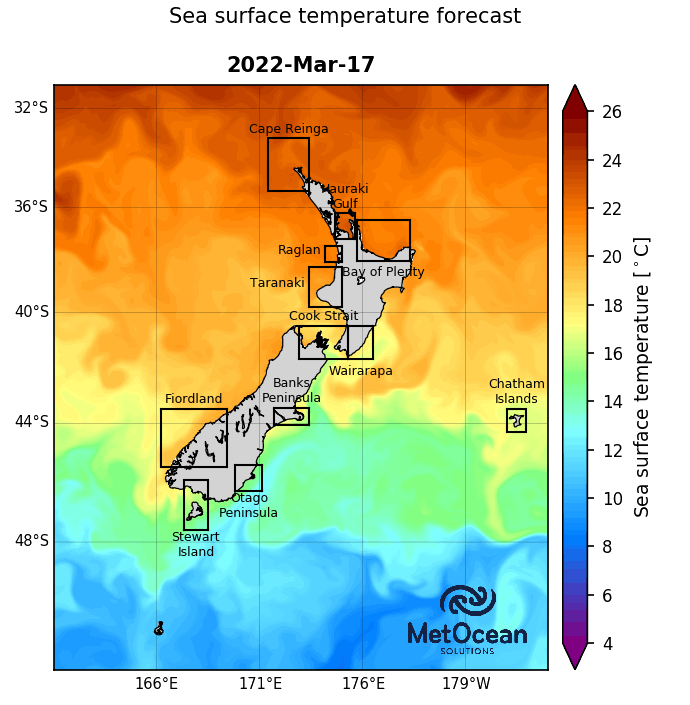Where was the warmest water? Marine heatwave records this summer
If you think the ocean has been unusually warm this summer, you are right – MetOcean Solutions ocean models and satellite data show that coastal waters in Aotearoa New Zealand reached up to 4 degrees warmer than usual and that marine heatwaves persisted for more than 100 days in places.
The research – which is part of the government-funded Moana Project - uses advanced ocean models to determine ocean temperatures.
Moana Project oceanographer Dr Robert Smith from the University of Otago says that this summer saw among the strongest marine heatwave conditions New Zealand has seen in the satellite ocean surface temperature record that began in 1981.
A marine heatwave is an extended period of extremely warm ocean temperatures.
Dr Smith says: “With temperatures reaching 4 degrees above average, a marine heatwave off the North Island west coast in mid-December blew all records for at least the last 41 years.
And a marine heatwave off Wairarapa, which lasted more than 80 days over the summer, brought heating of 1-2 °C above average that extended tens of kilometres offshore, and down to more than 75 metre depth.
This is important,” says Dr Smith, “because it is the temperatures at depth that most affect seafloor marine species such as crayfish, pāua and coastal finfish. When warming extends beyond the surface layer of water that is mixed by wind and waves, it starts to potentially affect a wider range of marine life.”
The longest marine heatwave this summer has been unfolding in the Bay of Plenty, where heatwave conditions have been ongoing for more than 100 days so far.
Dr Carine Costa, a Moana Project oceanographer from MetOcean Solutions, says: “Since early November, the Bay of Plenty has seen sea surface temperatures 1-2 degrees warmer than average. This marine heatwave is still ongoing, and currently isn’t showing any signs of abating.”
The warm sea temperatures are caused by a mixture of factors. “In some areas, warm air masses, light winds and sunlight heat up the surface waters,” explains Dr Costa. “In other areas the marine heatwaves are caused by ocean currents moving warm water masses into areas they don’t normally reach.”
“Looking ahead, this summer’s marine heatwaves are far from over,” states Dr Costa. “Over the coming week, we’re expecting marine heatwave conditions to continue in the Hauraki Gulf, Cape Reinga, the Bay of Plenty and the North Island’s west coast.”
Daily updated Moana Project marine heatwave forecasts are available at https://www.moanaproject.org/marine-heatwave-forecast.
 Sea surface temperatures around New Zealand are still high, with several areas remaining under marine heatwave conditions.
Sea surface temperatures around New Zealand are still high, with several areas remaining under marine heatwave conditions.
The Bay of Plenty has been under marine heatwave conditions for more than 100 days now, since 5 November 2021.


